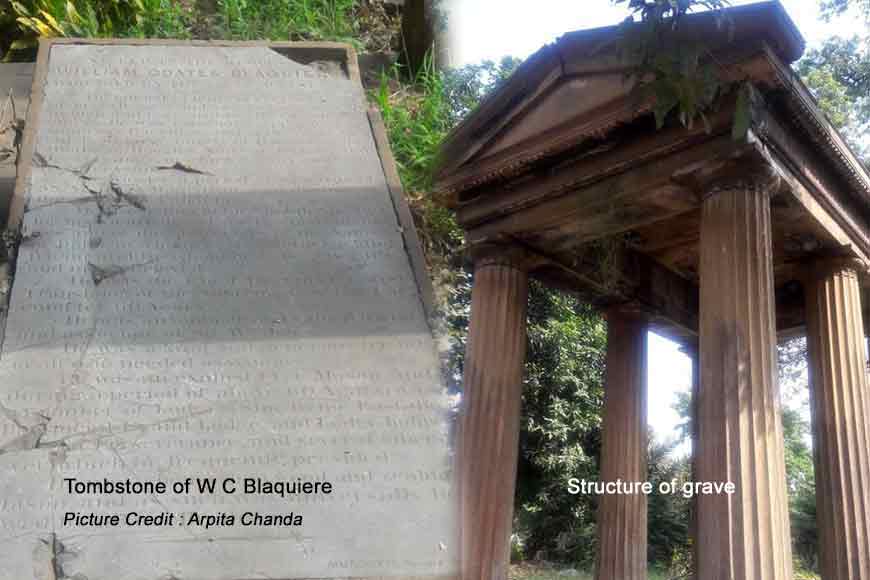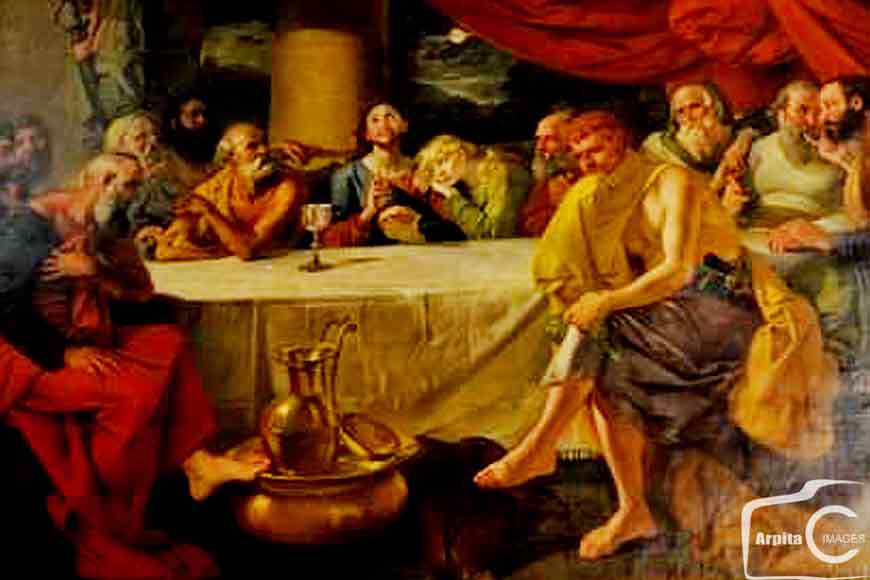Join the eerie walk through Lower Circular Cemetery

Before entering the Lower Circular Cemetery, you have to register your name and whereabouts. The dutiful officials would also impose certain restrictions regarding your conduct inside. After completing the official process, most of the visitors step into the cemetery to pay homage to the tomb of Michael Madhusudan Datta and his wife Henrietta, on the right. They also do not miss out the tombs of Dinabandhu Andrews or John Elliot Drinkwater Bethune. Tombs of some other well-known people also meet your eye. But there also lies the remains of other forgotten men and women whose memories lurk in the numerous derelict tombs scattered around the cemetery.
As I kept walking aimlessly amidst the graves, apart from cenotaphs and broken obelisks, my attention was caught by a dilapidated grave, of probably a little girls, embellished with statues of rabbit and squirrel. It seemed that Alice would return from Wonderland right then! But was not to be. All that I could hear was the winter breeze passing through fallen leaves which seemed like a mournful elegy sung by the angel with broken wings.
While wandering further, a mausoleum created in classical architecture style struck my eyes. I eagerly tried to read the faded name in the memorial plaque. Only the a few words engraved on the sandstone were readily legible - ‘William Coats Blaquiere, suppress dacoities, Hooghly, Nuddea, Jessore ....” The name seemed extremely familiar but I could not recall the exact association. Was he a police officer? As soon as the word ‘police officer’ came to my mind, I could remember it all. Yes, this must be the same person who is depicted in Jonathan Zoffany’s famous mantelpiece artwork at St John's Church, titled "Last Supper"! The artist had depicted St. Joan’s in the form of an effeminate man inspired by the police magistrate - William Coats Blaquiere, who used to take up the disguise of woman to arrest criminals!
 last supper - Picture Credit : Arpita Chanda
last supper - Picture Credit : Arpita Chanda
A sense of enthusiasm invoked within me on realization the fact that the grave lying in front of my eyes was that of every individual who has been featured in the painting of St. Joan’s church. I started reading the memorial plaque with greater curiosity. After mentioning his achievements as a police magistrate, the information threw a light upon Blaquiere as a linguist. He was a close friend of Sir William Johnes and also a member of the Asiatic Society. Apart from being a magistrate, he was also the chief translator of the Supreme Court for nearly 60 years.
At that time, the East India Company was taking gingerly steps in institutionalizing criminal procedures. Just like his innovative approach of going incognito, Blaquiere was also instrumental in first appointing informers to supply the law enforcing agencies with vital intelligence regarding criminals. These informers were known by the Farsi term "goyendas" which is a far cry from the present usage of the words to denote a detective. These informers were mostly erstwhile criminals, who were used by Blaquiere to learn about the whereabouts of their erstwhile mates. In vast areas of Nadia Hughly and Jessore, sources were recruited to resist organized robberies during his tenure. Blaquiere used to provide the remuneration of these informers from his own pocket. The results turned out to be truly remarkable. Due to the recruitment of sources, the problem of robbery could be controlled to a large extent within a very short period.
Looking back at Blaquiere's life, I found that he was born around 1759 (?). His father was a trader in Shantipur. However, nothing is known about his mother. Perhaps, she was a native woman. Blaquiere was sent abroad to pursue his studies. He came back in 1777. After brief stints in other jobs of the East India Company, he settled in the law enforcement department in capacities like Justice of Peace and later, as a police magistrate.
As a linguist, Blaquiere was proficient in several languages. His celebrated work is the translation of a section of the 'Kalika Puran’, known as 'Rudhirádhyáyă' , or sanguinary chapter. It can be assumed that the translation was undertaken for the impact of this practice in respect of enforcing rule of law in the country. However, it also needs to be mentioned that the translation, to an extent responsible for creating the image of Kaali worship as a bloodthirsty cult.
As an administrative executive, Blaquiere was witness to the birth pangs of the civil service system in the country. In addition to the problems associated with the system building process, there was a distinct undercurrent of power clash between Anglo Indians and officers of pure European origin. Despite his success in establishing law and order, he was not a covenanted officer of the Company. Blaquiere was also seen as an adversary by the missionaries of Serampore. Blaquiere was absolutely against the concept of religious conversion and resisted these activities within his jurisdiction. His sympathetic attitude towards local population and their reciprocatory gratefulness finds a special mention on his tombstone inscription. Blaquiere died in 1855 and was buried in this site inside the Lower Circular Road Cemetery.
Back home, on researching further, the words "police", "court", "translator" revealed an interesting association about two persons interred in this cemetery. As mentioned earlier, Michael Madhusudan Datta also found his final resting place in this cemetery. On returning from Madras in 1856, he found himself homeless and penniless in this city. At that point of time, Kishori Chand Mitra (brother of famous Pyarichand Mitra’s) provided him shelter in his garden house at Dumdum. Mitra, himself being a Police Magistrate, further supported Michael Madhusudan by arranging for him the job of a translator in the Police court. Through this association with Mitra, Madhusudan got introduced to the Babus of Paikpara Rajabari. The Babus were great connoisseurs of theatre. They invited Madhusudan to undertake the task of translating 'Ratnaboli', a Sanskrit play. This was the stepping stone to his future fame as one of the greats of Bengali literature.
Today, Madhusudan Datta’s burial ground lies only a little far from Blaquiere’s tomb in the same graveyard. This connection did not occur to me until that moment. The publishing company Penguin has been introducing readers with the world's classic literature for the last 70 years through its series of Penguin Classics Book. The latest volume of the series was published a few days back. This was an attempt to capture a glimpse of classics literature produced during the last 4000 years of human literary history. The works of five hundred writers have been featured in this classic book. Woefully, only one page is dedicated to Indian literature where just three books of Rabindranath Tagore have been discussed. Responding to the allegation, the editor said, “the displeasure is legitimate. However, we expect that popular English translation of vernacular literary classics should come up from the people of the country itself. Is that happening in India?”
Does an iota of this regret not touch the two great translators lying in oblivion in Lower Circular Cemetery? Perhaps it does but little does that rekindle our consciousness.
(Note: while entry with bigger cameras are prohibited, the officials provide permission to use mobile phone cameras to take pictures for documentation purpose)
Picture Credit : Arpita Chanda










